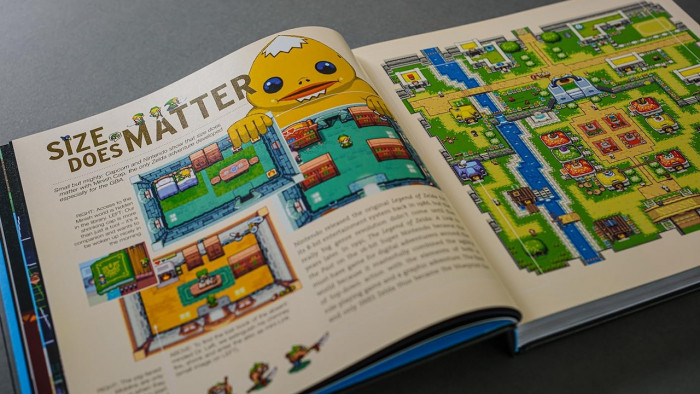How to make a billion-pound football video game
Inside the FIFA, Pro Evolution Soccer and Football Manager triopoly


Until science finds a cure for death, the funeral director will remain recession proof. Football video games enjoy similarly favourable conditions.
Unlike the loosely defined ‘gamer’, whose attentions and cash are divided between a gamut of titles, the football fan has their sights set on relatively few games every year. They know they’re going to buy them, even before they’ve been released. It’s those three goliaths of the genre - Fifa, Football Manager (FM) and, hanging in there stoically, Pro Evolution Soccer (PES) - that dominate their play-time.
According to available industry insights, the 2018 edition of Football Manager sold over a million units for the sixth time in a row. Pro Evolution Soccer achieved just under the million mark (accounting for physical units only, not digital downloads), but a sister mobile app release accrued 150 million downloads. Meanwhile, according to Forbes’ 2016 calculations, the Fifa franchise accounts for 40% of developer behemoth EA Games. By 2021, they anticipate the series will make £2.36 billion annually.
How did these games get here? Are they essentially a yearly licence to print money, or locked in an eternal, relentless battle against the threat of irrelevancy? Just how long can the triopoly last?
That creaking sound filling your ears? It’s the cogs turning in your head. You’ve had an idea. Billions of pounds a year sounds good. Why don’t you get in on this football video games lark?…
Mat ‘MDickie’ Dickie had that idea, too. The legendary one-man-studio developer, described in some quarters of the press (unfairly) as “to video games what The Room’s Tommy Wiseau is to film”, has built a cult following over the course of his near-20 year career for a phenomenal output of high-concept but lovably low-budget games. Wrestling Revolution 3D, which has you play as a Vince McMahon-esque pro-wrestling booker, is Dickie’s most successful title, with over 50 million mobile downloads on the Google Play store. A selection of other masterpieces include Popscene (you play as a Simon Cowell style music mogul trying to assemble the next hit act), Hard Time (you play as a convict trying to earn their reputation in prison) and The You Testament (you play as your own disciple of Jesus, writing your own gospel, obviously.) In 2006, he turned his hand to football, with Grass Roots.
“When I was a kid, playing football with my friends wasn’t this polished, predictable experience,” he tells me. “It was ‘jumpers for goalposts’ and adapting the rules to suit where we were and how many people showed up. I always felt there should be a game that captures the spirit of that.”
Grass Roots is a knowingly-daft hybrid, if International Superstar Soccer was an RPG and played out across a digital version of the board game Risk. You create a character, then attempt to take on the world at a kickabout. You sometimes play with match-ready footballs, and sometimes you play with floaters, or deflated pigskins. There are no referees, so fouls have to be won by convincing your biased opponent to give them to you. Different storylines occur according to a number of factors, including your player’s reputation and the pals you assemble in your team. It was a novel take on the genre. Did it make him billions?
“I released it during the 2006 World Cup and still couldn’t find an audience for it, which was pretty damning. It was like failing to sell ice water in the desert!” he says. “I can’t imagine a more challenging genre to tackle than sports of any kind. The physics and animation, the sheer number of participants, the AI making sense of the rules - it’s a baptism of fire for any developer.”
From 1985 to 1991, and in between school, universities and various holidays, brothers Paul and Oliver Collyer conceived and coded a game from their bedrooms, largely using info gleaned from Rothmans Yearbooks. The game – a text-based management simulator with fewer graphics than Teletext– would become Championship Manager. Then, after a studio split with then-publisher Eidos, Football Manager.
Miles Jacobson is studio director of Sports Interactive, and the quasi Steve Jobs-meets-MySpace-Tom public figurehead of FM. With affection, he describes the games’ most dedicated players to me as the sort of people who would otherwise be furiously jamming the 606 phone-lines and straining social-media servers with bold claims of how “they could do a better job than the manager”.
FM provides such notions an outlet, the closest thing an armchair tactician can get to putting their theories into practice short of storming the dugout. To some, it provides a balm to idle daydreams. For others, it’s fuel to fantasy’s fire.
“We get stories regularly from people telling us about the influence it’s had on them,” says a proud Jacobson. He talks of people who would go on to start data companies, become scouts, coaches and managers. “Not all of them talk about it necessarily, but when André Villas-Boas was chief scout at Chelsea, he spoke about using our data to help him. A lot of football clubs buy data from us now. We’ve got 1,300 scouts; the largest scouting network in football.” So dedicated are the Sports Interactive scouts to their task, that they sent members of their team down to assess a ShortList lunchtime kickabout two years back.
The appeal of FM can seem curious to the uninitiated. It’s nowhere near as aesthetically polished as Fifa, but the imaginative blank-filling required can make it every bit as immersive. You aren’t flicking between an inbox and an Excel Spreadsheet, you are (in your mind) in your manager’s office, or your dugout, or the changing rooms, or the training pitches, or roaming the corridors in your puffa jacket, scouring for a new inch of the club to redesigned in your own image. Only, in your mind, mind.
To the casual observer, it still looks like you’re answering emails and looking at a load of databases, of course, but delve deeper and they’ll discover more analytic gizmos to be tinkered and toyed with than even afforded Gary Neville’s Monday Night Football fingertips.
The series has benefited from – and arguably been largely responsible for – the proliferation of statistics as a staple part of the modern fan’s football diet. “People are growing up now with so much more data,” reflects Jacobson. “We’ve been very influential in that, however arrogant that might sound.”
Sports Interactive has created an incredibly lucrative double-whammy. A madly addictive video game (Jacobson says the average FM user’s annual playtime is 250 hours, more than 10 days), and a genuinely valuable industry tool. This twin-offering ensures a longevity other developers can only dream of. But how do you maintain life at the top, when no one is coming for your throne?
“Accusations of being complacent are the biggest insult anyone can make to our studio,” says Jacobson. “We haven’t become complacent because we still don’t believe that we’ve created the greatest game that we can possibly create.”
Football Manager 2019 boasts a revamped and more in-depth training module (“not as in-depth as in CM 4, where you actually needed to have your coaching badges to use it,” quips Jacobson), more realistic ball physics and a tactics system designed to make the user feel less like their interrogating conditions in an algorithm, and more like a canvas for them to choose their style of play.
“We don’t start planning the next game the day off after this one comes out. We’ve done a lot of planning already. We know what the core main features are for next year. I know what the core features are going to be for FM21 as well.”
“As long as people continue buying the game we can continue making them.”
When EA Sports released FIFA International Soccer in December 1993 (in time for Christmas) it sold half a million copies in a month and became the best selling game of the year. It had two trump cards. The first was an isometric camera angle, which gave players the illusion of 3-dimensions, rather than the top-down view other attempts at football games most often plumped for. The second was the official licencing deal signed with FIFA, the sport’s governing body, allowing the game to use real names.
This was enough for the series to reign supreme over the likes of Sensible Soccer, Actua Soccer and Kick Off, the other pretenders of the crown, for most of the decade. Until Japanese developer Konami came along with their offering, Pro Evolution Soccer. The turn of the century had Fergie vs Wenger, Blur vs Oasis, Stone Cold vs The Rock and Fifa vs PES. The two tussled for players attentions virtually neck-and-neck.
In contrast to Football Manager’s for-the-heads-first frills-second experience, Fifa and PES promise blockbuster spectacle. Staring at the two games on the shelves, the unawares parent could be forgiven for mistaking one for the other during the Christmas shop. After all, boiled down to their essentials, both products are attempting to recreate the match experience. But the titles’ respective devotees are separated along a ideological divide.
Matt Prior, Fifa’s creative director, tells me that the series’ ultimate aim is “trying to represent something that’s happening in the real-world game, until the point that it’s indistinguishable from what you see on TV”. When I put the same question to Lennart Bobzien, PES’s European brand manager, he says, “Our target is actually to replicate the realism on the pitch as you know it. Real-life football, that is.”
They seem like near-enough identical answers, but there are subtle differences belying the crucial difference in the two games’ philosophies.
Prior speaks of how, when something becomes “part of the culture of football, we might bring them in, even though we don’t need to bring them in”. This is at the heart of EA Sports’ ‘It’s in the game’ slogan-cum-ethos. Goal-line technology is a recent example, but it extends far beyond the pitch. Lighting, weather and virtual crowds react differently “depending on whether you’re playing in South America or Stoke”. As many real chants have been recorded as possible (“unfortunately, there’s a lot we can’t use if we want to maintain our ‘E for Everyone’ rating…”), commentators have fully realised conversations, updated according to real-world events, stadium DJs bellow out goalscorers. Fifa’s meticulous attention to detail comprises innumerate, tiny but painstakingly realised and rendered touches.
Perhaps most importantly, Fifa boasts 35 fully-licenced leagues, encompassing hundreds of teams. This is Fifa’s realism. It looks and sounds indistinguishable from the real thing. (Fifa 2001 had a scratch-and-sniff pitch-scented disc – it even smelt like the real thing.)
Pro Evo’s licencing deals were far less comprehensive, though they skirted their lack of licencing with some creative renaming of clubs and players. (Roberto Larcos, Ryan Greggs, Edwin Farzel Haar being yesteryear fan-favourites). This isn’t really the point of PES. When Bobzien discusses realism, he emphasises how the ball “is one of the main stars” of the game. This is PES’ realism.
Where Fifa gifted its players as many goals as they wanted, with halfway-line screamers de rigueur, rewarding you as though a simpering court jester throwing its coat over a puddle, PES perversely made you earn your wish fulfilment. “It’s about animations, ball physics, how the players are behaving, how they’re moving,” explains Bobzien. There was believable weight and action to everything in PES, a discernible difference in what your players could do based on their attributes, and an AI who would defend by actually anticipating your attacks, harrying you and closing down space far more intelligently than their headless chicken Fifa counterparts.
PES forced you to patiently prod and poke to find a chink in an opponent’s defence to get so much as a sniff on goal, and then you could still end up with a controller flung across bedroom in thwarted frustration. A joystick nudged a degree in the wrong direction, and the ball dragged helplessly wide. A button mashed a fraction too gently, and your shot trundled harmlessly into the keeper’s arms, or else pressed a half-second too early, while still mid-sprint, and it ballooned into the stands. But done right - managing to judge the speed, trajectory, angle, power, everything just right - and it might, might, fizz into the back of the net, and you’d feel pure contentment. This felt like the real thing.
Fifa was for show, Pro Evo was for, well, a pro. Besides, on the earlier consoles, the graphics were so limited that even playing as officially licensed Premier League club still required a taxing amount of blank-filling on your imagination’s part.
For a time, it was widely accepted that those seduced by branding went for Fifa, while the discerning fan opted for PES. Despite the financial might of EA, in 2007, Fifa sold 6.55 million units, while PES shifted 6.37 million. By 2015, it was 18.79 million to 1.72 million in EA’s favour. What changed?
“We went back to basics and completely rewrote the gameplay code specifically for the next generation of consoles,” says Prior. “I think that kind of gave us the elevation to the next level.” While PES had backed its code to make the leap, Fifa’s rip it up and start again gamble paid off. The gulf between the two games’ gameplay experience all but closed entirely, until Fifa’s even seemed to surpass its rival.
Crucially, the step up in the new consoles’ graphical capabilities told. As global football mutated into a cohesive corporate entity (and an overtly branded one at that), the fully-licenced ‘official’ visuals of Fifa carried greater legitimacy, allowing it to exist far more neatly parallel to the ‘real thing.’ Meanwhile PES’ once endearingly-campy fake teams and presentation suddenly seemed like relics of an immediately bygone era. Prior emphasises this point. “Ultimately, Fifa’s about people’s fantasy of playing with their real players.”
“One of Fifa’s strengths is just so many people play it,” he continues. “There’s a very vibrant community, and the step up to online really allowed that.” The licencing power proved particularly telling when it came to the explosion of online multiplayer modes. In particular, players uploading footage of their games to YouTube. A cadre of the UK’s biggest vloggers made their names playing Fifa. Browsing the site, videos about FIFA 19 seem to attract millions of viewers daily, while videos featuring PES 2019 occupy a niche in the tens of thousands. The architecture of the internet is built around SEO terms, so it’s not hard to see how videos featuring ‘Chelsea’ and ‘Manchester United’ are going to be found far more easily than those boasting PES’ ‘London FC’ and ‘Man Red’. And when your online presence is as strong as Fifa’s, to the generations growing up knowing nothing before YouTube, yours is seemingly the only football game that exists.
And there’s another trump card up EA’s sleeve.
Introduced in Fifa 09 by Prior himself, the ‘Ultimate Team’ gameplay mode has players assemble fantasy teams by accruing in-game currency – either for free, by winning games, or by paying real money. Its success is credited with popularising the ‘loot box’ micro-transaction element now highly prevalent in modern video games, whereby players are required to spend further to the original purchase price to gain access to a game’s full content. It’s a highly controversial topic in the games industry, and seen several countries have made moves towards declaring it illegal.
In fairness to Ultimate Team, unlike far more cynical and egregious deployments of loot-boxing in other titles, you aren’t required to play it to unlock upgrades or items in the rest of the game. It’s even ostensibly possible to play it and assemble your ideal team of players without spending a penny, through gameplay alone (admittedly, it’s a lot harder.)
Undeniably, though, it’s one of Fifa’s most successful modes. Even the act of opening packs is a massively popular YouTube subgenre. Though EA wouldn’t disclose any current figures to me, in 2017, company CFO Blake Jorgenson told Morgan Stanley analysts that the Ultimate Team contributes $800 million annually.
So where does that leave PES?
In 2013, Konami introduced its Fox Engine which (arguably) clawed PES’s gameplay back in front. The modern iterations of Fifa are full of flicks, tricks and bicycle kicks which often occur through unprompted AI assists. They make you feel brilliant, the way games like Assassin’s Creed make casual gamers think they’re good at parkour, sure, but PES belatedly embraced the new era of consoles to double down its original raison d’etre.
Balls bounce and bobble in different ways, all according to a player’s interaction with the game. You have to learn and master how wind-speed, spin and skid affect the behaviour of the football; how players turn, collide and tussle; and how Messi’s feet might still misfire even if you perfectly gauge the angle of a shot, because he’s leaning slightly too far forward when you attempt it.
Its presentation (impressive player likenesses aside), lack of licensing and game modes still lag behind Fifa’s, but it feels great again. It might not be able to offer the bells and whistles of its rival, but PES now - for the time being, at least - offers you a different experience.
Of course, you suspect Konami harbour ambitions of competing toe-to-to with EA again, but you have wonder if Fifa’s position atop the hierarchy is now unassailable.
“I genuinely think competition is great,” contends Prior. “It keeps everyone on their toes. I don’t really want the day where Fifa is the only game out there, so long may it continue.”
In 2013, Simon Read’s New Star Soccer 5 knocked Fifa off its perch.
“I always wanted to write games from the player’s perspective rather than the managers,” Read tells me. “It’s the players who are the real stars, having all the fun.” New Star starts you as a 16-year-old youngster with his career ahead of him. How that pans out is up to you. There is a match element, where you control your player by play finger football in glorious top-down 2D, but New Star Soccer comes into its own behind-the-scenes.
Here, it becomes a text-based lifestyle sim, as you juggle the external forces facing a professional footballer - your teammates, your boss’ approval, your media perception, your love interests, your own happiness - which all take their toll on your bank balance, and your energy levels. You can get dedicate yourself to the game, getting your head down in training and hoping it reaps dividends in the long run, or else you can turn to more nefarious pleasures and solutions, betting on horses, developing a drinking habit or bribing match officials to meet your aims.
Read had been coding the New Star series as a one-man-studio for years, more as a labour of love than for its monetary reward. New Star Soccer 5 changed all that. “The explosion was purely fuelled by word of mouth. I launched the game without any fanfare on iOS, Android and on some flash sites. Within weeks it hit the top grossing slots on mobile.”
The game has a free-to-play element, incorporating loot-boxing, or else users can pay for a premium account allowing unlimited access. To date, it’s had over 10 million downloads. More than simply being a qualified financial success, it pipped FIFA 13 to a video game BAFTA. “I think it was the fact that the game was so unique, so compulsive and really took advantage of mobile devices that it received the award,” Read reflects.
FIFA 14 claimed the gong the following year, though it helps that Fifa can compete year-on-year. “We may release a true sequel to New Star Soccer in the future,” says Read. “But I certainly don’t see us releasing a new product every year.”
I ask him if he plays any of the other annual titles. “Not so much these days. They add new features every year but it’s generally more of the same.”
If there’s one disadvantage to Fifa’s massive audience, it’s the scale of expectation which has to be met, every single year. “A lot of other games out there have 5, 6, 7 years to iterate on the previous one,” Prior points out. “The world of football isn’t going to delay the start of the season just because we’re running late!”
When it comes to a new edition of Fifa, EA aren’t just tweaking the match engine, it’s also got to update the various game modes: Ultimate Team, Career and The Journey - a cinematic Dream Team-meets-FIFA semi-RPG trilogy that has played out over the previous three releases. “Time and resources aren’t infinite, so we have look at the game, where we can improve it, where we want to focus and try and bring as much innovation and improvement across the board.”
Fans aren’t often the most understanding of this need to fight across multiple fronts. YouTube reveals a horde of furious vloggers absolutely irate that their prefered game mode, or else another aspect of the game hasn’t been sufficiently upgraded and enhanced specifically to their liking.
‘There’s no kind of stereotypical Fifa user,” notes a diplomatic Prior. Over various releases, the team have played around with “dialling up the authenticity” of the match engine, with a wide variety of response. “Some people like a slower build-up, more tactical game, whereas others want more fun and lots of goals. It’s trying to find that eternal balance between the two.”
For Bobzien, the main part of approaching the next PES “is all about researching”. The Konami team visits various clubs around Europe to consult and observe managers and coaches. “We analyse their fitness behaviour, the gameplay, the style. That’s what we actually want to replicate. So if you have a Liverpool with Klopp’s Gegenpressing, that’s something we want to replicate in the game. That’s very important for us.”
He also enthuses about Rocket League - a game where you control an individual flying car in a sport crudely resembling 5-a-side football. It’s a game that’s all about physics, much like PES. Bobzien was impressed with the game’s take-up after it was released for free for one weekend (you wonder how much that might have influenced Konami’s decision to release a free ‘Lite’ version of PES 2018 last year) and how that established Rocket League as a major player in the world of eSports.
Bobzien is particularly keen to emphasise the importance of eSports. While Fifa has signed a partnership with the Premier League to create the ‘ePL’, a tournament open to the public starting in January, PES is launching ‘eFootball Pro,’ its own competition in conjunction with an agency owned by Gerard Pique, and a tournament exclusively for actual football clubs. Participating football clubs - the likes of Barcelona, Celtic and Monaco so far - have signed professional eSports players to represent them in the competition.
According to a Deloitte prediction, the global eSports market will generate $1.5bn annually by 2020. If PES’s realism-first match engine can establish itself as the eSports players’ choice, it could be one way it can regain a foothold against its old foe, though of course, Fifa’s gigantic user-base and licensing power still gives it advantages in this arena.
Both Prior and Bobzien seem excited about the immersive potential of VR, how it could feasibly allow you physical views from the stands, or to roam around the pitch. Jacobson is less convinced, thwarting those gagging to play Football Manager from a fully-realised dugout. (“The main negative is the projectile vomiting you have about 20 seconds into playing it.”)
When Football Manager has real-world scouting and database commitments to serve, it makes sense that dedicating time and resource to giving players the ability to wrestle with their puffa jackets a-la Wenger is probably low on Sports Interactive’s priorities list. But with 3D match engines honed over a far longer period, could Fifa and PES soon have industry applications?
“We hear a lot of teams will actually use our game as a first-level scouting mechanic if they’re playing an opponent they don’t know much about,” says Prior. Just last week, Genoa summer signing Krzysztof Piatek revealed he researched his teammates on his PlayStation. A return of 13 goals in his first 13 games suggests it seems to have worked.
I ask Bobzien if it might be possible to utilise video games for coaching in the future. “I would definitely say so, especially when you look at the technology nowadays. I can imagine that football clubs will make use of technologies used in football video games, maybe for an analytical purpose or point of view.”
But is this procession towards ultra-realism pursued by the triopoly actually what the future of football games should become?
“Nowadays, it barely feels like you’re controlling anything, you’re just there to trigger the next beautiful motion-captured sequence,” argues MDickie. “It’s a trick that convinces the casual gamer they’re having a good time, but it doesn’t work on me as a developer. I checked out when they all became photo-realistic, as I feel realism is the opposite of what a game should be.”
“I don’t want a simulation of real football. I want something new, exciting and intuitive,” agrees Simon Read. “Football is played on the ground, by 22 individuals, all with their own perspective. Let’s explore that and stop trying to be Sky Sports.”
If there is a be gap in the market for a future contender to seize upon, as the success of New Star Soccer suggests, then this could be it.
This isn’t to knock the triopoly. All three exist, and will continue to exist, because they serve their own particular audience so well. Fifa is for that global audience seduced by the absurd bombast and borderline-grotesque glamour and product packaging of modern football. PES is for those who want to showcase a footballing brain that have been inhibited by bodies bereft of athleticism beyond the thumbs. Football Manager is for those febrile minds with delusions of tactical grandeur and transfer acumen. But perhaps there’s an opportunity for another, fourth way. This is where your billions lie, reader.
“I’ll bet there’s still room for a truly character-driven, story- driven sporting experience,” muses Dickie. “I’d like to see a sports game in a world as open as Red Dead!”
Latest
Related Reviews and Shortlists









